
Vol. 7, 2020A new decade for social changeswww.techniumscience.com9772668779000ISSN 2668-7798

Information Technology, Organizational Culture, and Service
Quality: The mediating effect of Personnel’s Performance
Palma Fitria Fahlevi1, Tigor Sitorus2
1, 2 Indonesian Police Science College
palmafahlevi80@gmail.com1, sitorus_tigor@yahoo.com2
Abstract. This study aims to investigate and develop a model of empirical research on
Information Technology, Organizational Culture and Personnel’s Performance to Service
Quality by proposing Personnel’s Performance as a mediating variable.
Design/methodology/approach:The study was conducted by surveying 100 police officers and
100 community Personnel at the join operation office between Police with Local Government of
Bandung city (“Samsat”), and the data were analyzed by structural equation model, using Smart
PLS.Finding: The paper finds that all hypotheses are accepted and the result of the study proves
that personnel’s performance with indicators; effectiveness and efficiency, authority and
responsibility, discipline, initiative, acts as an intervening variable on the influence of
Information Technology and Organizational Culture toward Service Quality. Research
limitations/implications: Future research should be conducted to examine the influence of all
personnel performance of Indonesian Police in all join operation office between police with local
government in order obtained more varied result. Besides the variables should be developed to
examine the influence factors of Service quality such as; management knowledge and others.
Practical implications: The proposed of information technology and organizational culture with
the high loading factors which are related to increase Personnel’s Performance may help in
increasing Service Quality. Both indicators could be increased together in order Personnel’s
Performance be increased and impacted to service quality. Originality/value: The value of this
paper as the strengthen is the model empirical research that redesign of Personnel’s Performance
as mediate variables with more indicators that has high loading factor and significant value, so
the Personnel’s Performance may act as mediate variable between exogenous with endogenous
variable.
Keywords. Information Technology, Organizational Culture, Performance, Service Quality
1. Introduction
National Police of the Republic of Indonesia that called as “Polri” is an organization
that carries out government functions in the field of maintenance of security, public order, law
enforcement, protection and service to the community.
According to the regulation ministry of government officer control No. 63 of 2003
concerning General Guidelines for the Implementation of Public Services, the form of public
services is a form of service activities carried out by the delivery of public services as an effort
to fulfill the needs of recipients of services or the implementation of statutory provisions.
128
Technium Social Sciences Journal
Vol. 7, 128-138, May 2020
ISSN: 2668-7798
www.techniumscience.com

While Ibrahim (2008: 66) tries to formulate that prime public service is service by the
government to the community with various dimensions, standards, processes and
implementation so that the community feels satisfied with the service.
The Police in this case is the Traffic Police which carries out its role and function as a public
servant as stated in Law No. 2 of 2002 concerning the National Police, and more specifically
in traffic assignments as referred to in Regulation No. 22 of 2009 concerning Road Traffic and
Transportation.
Based on Regulation Number 2 of 2002 concerning the National Police of the Republic
of Indonesia Article 15 paragraph (2) letter (b), the National Police of the Republic of Indonesia
has the authority to hold registration and identification of motorized vehicles. This is reaffirmed
in Regulation Number 22 of 2009 concerning Road Traffic and Transportation Article 7
paragraph (2) letter (e) which states government affairs in the field of Motor Vehicle
Registration and Identification and Drivers, Law Enforcement, Operational Management and
Engineering Traffic, and traffic education.
Based on the Law that mention above, so the Indonesian National Police has the
authority and duties in the framework of carrying out / managing registration and identification
of motorized vehicles.
Problems that often arise regarding the personnel’s performance of employees states
by Mukarom and Laksana, (2016: 20) like the public complaint when queuing at the
Registration and identification service counter turned out that someone else's queue behind and
file afterwards was completed first.
Various studies on the use of information technology in public services have been
carried out by researchers such as; Gulam Rasul and Ashok Kumar Sahu (2011) and Ramaiah
Itumalla (2012) suggest that there is an influence with the use of information technology on
service quality where IT applications and accessibility facilitate the flow of information that is
free, creative expression and effective management. While different results were obtained by
Herlinda (2016), where research on the Influence of Information Technology on Quality
Improvement of PT Pos Indonesia's Public Services in Tanah Grogot District, Paser Regency
concluded that the Hardware, Database, Network and People variables simultaneously
(simultaneous) did not have a significant effect towards improving the quality of public
services, while partially it is known that Database indicators have a positive and significant
effect on improving the quality of public services.
Research related to the influence of organizational culture on service quality is also
carried out in Indonesia as was done by Rahmady Radiany (2003) which examines the problem
of the Effect of Organizational Culture on Service Quality at PTS in South Kalimantan. The
results obtained include the results of the study in general indicate that there is a significant
influence partially or simultaneously between organizational culture variables with the quality
of service to students by lecturers and employees.
Based on empirical phenomena and various research gap above, the researcher aims
to try to develop a model of empirical research on the Application of Information Technology,
Organizational Culture, and Performance to Service Quality at “Samsat” of Bandung City ", by
proposing Performance as a mediating variable, so that this study specifically intends to
investigate and to know; 1). Does Information Technology have a positive and significant effect
on Personnel’s Performance, 2). Does Organizational Culture have a positive and significant
effect on Personnel’s Performance, 3) Does Information Technology has a positive and
significant effect on the Quality of Service 4). Does Organizational Culture have a positive
and significant effect on the Quality of Service 5). Does Personnel’s Performance have a
positive and significant effect on the Service Quality?
129
Technium Social Sciences Journal
Vol. 7, 128-138, May 2020
ISSN: 2668-7798
www.techniumscience.com

2. Literature Review
2.1. Information Technology
According to Bambang Warsita (2008: 135) states that information technology is a
means and infrastructure (hardware, software, use ware) system and methods for obtaining,
sending, processing, interpreting, storing, organizing, and using data meaningfully, while Azhar
Susanto (2013: 12) states that information technology is a study, design, implementation,
development, and support and management of information systems on a computer basis,
especially those related to the application of computer hardware and software.
2.2. Organizational culture
According to Robbins and Judge (2013: 512) states that organizational culture refers
to a system of shared meanings held by personnel that distinguish organizations from other
organizations, while Kinicki and Fugate (2013: 32) states that organizational culture is a set of
shared assumptions, taken for implicit assumptions held by a group and which determine how
he views, thinks about, and reacts to various environments.
2.3. Employee performance
Performance is the output produced by functions or indicators of a job or a profession
in a certain time (Wibowo, 2010: 5), while Abdullah (2014: 3) states that employee performance
is the result of work that has a strong relationship with the objectives of organizational strategy,
customer satisfaction and economic contribution.”
2.4. Service quality
According to Adam (2015: 13) states that the quality of service is consumers
evaluating the quality of services obtained starting from the process and the results of delivery
given whether it is in accordance with consumer expectations, in determining the services
obtained have been fulfilled well finally will be returned to consumers because consumers'
views will vary according to the wishes and expectations of consumers."
3. Methodology
3.1. Research Approaches and Methods
This study uses a quantitative approach, because research data in the form of numbers and
analysis using statistics, and the research methodology used in this study is a verification research
method (Sugiyono, 2017: 7).
3.2. Operationalization Variable
Exogenous Variables, in this study is information technology with measurement indicators;
Proper functionality, reliability, availability, security and data integrity, standardization, integration,
consistency, and portability Shneiderman (1998: 11), while organizational culture according to
Robbins and Judge (2013: 512) can be measured based on indicators as follows: Innovation and risk
taking, attention to detail (Attention to Detail), results oriented (Outcome Orientation), human-
oriented (People orientation), team oriented (Team orientation), Aggressive attitude
(Aggressiveness), Stability (Stability),
Intervening variable, in this study is employee performance with indicator size;
Effectiveness and Efficiency, Authority and Responsibility, Discipline, Initiative (Prawirosentono
2008: 27). Endogenous variables, the dependent variable in this study is service quality with
indicators of Tangibles, Reliability, Responsiveness, Assurance, Emphaty, (Mukarom and Laksana
(2015: 222)
130
Technium Social Sciences Journal
Vol. 7, 128-138, May 2020
ISSN: 2668-7798
www.techniumscience.com

3.3. Research Population and Samples
The population in this study were Personnel of the Bandung City “Samsat” (Region: West,
Central, East) totaling 140 people, all existing samples have criteria that are in accordance with the
phenomenon under study and with a proportional sample where we set a sample of 100 respondents
from each of the “Samsat” Personnel of Bandung from the West Java Regional Police Headquarters,
and the community.
3.4. Data analysis technique
The data analysis technique used in this study is quantitative analysis. Quantitative analysis
is a research method based on the philosophy of positivism, this technique is used in examining a
particular population or sample, data collection using research instruments, quantitative/statistical
data analysis, aims to test the predetermined hypothesis (Sugiyono, 2017: 13) . The data analysis
method used in this study was multivariate analysis. Multivariate analysis is the analysis of several
variables in a relationship or set of relationships (Hair et al, 2010: 2). Multivariate analysis used in
this study is by using Structural Equation Modeling (SEM). Sugiyono (2017: 329). The Stuctural
Equation Modeling technique used in this study is Partial Least Square (PLS) 2.0. Partial Least
Square (PLS) is one of the techniques of Structural Equation Modeling that is able to analyze latent
variables, indicator variables and measurement errors directly. (Wiyono, 2011: 395).
3.5. Validity test
The validity test model used in this study is construct validity. Construct validity shows
how well the results obtained from the use of a measuring instrument in accordance with the theories
used to define a construct (Wiyono, 2011: 114). The construct validity can be tested through
convergent validity, discriminant validity and average variance extract. Convergent validity occurs
when the results obtained through data processing are two research institutions or variables that have
relevance (Now and Bougie 2010: 160). Discriminant validity is a test carried out to measure
differences between two conceptually similar variables (Hair et al, 2010: 137). AVE is the variance
of the indicators described in the latent construct AVE values range from numbers 0 to 1 (Malhotra,
2010: 702).
3.6. Reliability Test
Reliability testing can be done by test-retest (stability), equivalent and a combination of both.
Internally the reliability of the instrument can be tested by analyzing the consistency of the items in
the instrument with certain techniques (Sugiyono 2017: 356). The reliability test used in this study
is construct reliability. Construct reliability or composite reliability is basically testing the indicators,
to what extent can measure theoretical constructs. Construct reliability can be tested through
composite reliability, according to Wiyono (2011: 403), if Loading value > 0.70, then the latent
variable is declared valid, and the loading value is < 0.70, then the latent variable is declared invalid.
Test the coefficient of determination (R2)
The coefficient of determination (R2) in principle has a goal to measure how far a mode is
able to explain the variation of the dependent variable. The coefficient of determination ranges
between zero and one. (R2) which has a small value means that the ability of independent variables
to explain a variation of the dependent variable is very limited. The coefficient of determination that
approaches one means that the independent variables provide almost all the information needed in
predicting variations in the dependent variable (Ghozali, 2011: 97). According to Sugiyono (2017:
257) the formula for calculating the coefficient of determination is as follows: CD = r2 x 100%
131
Technium Social Sciences Journal
Vol. 7, 128-138, May 2020
ISSN: 2668-7798
www.techniumscience.com


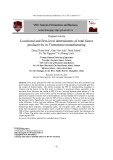
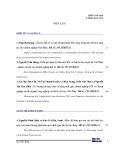
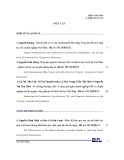

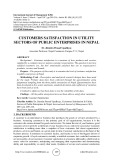

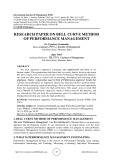
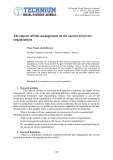
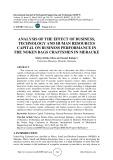
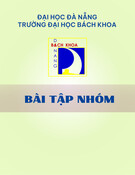
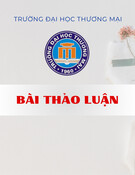





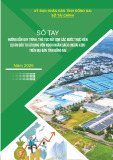
![20 câu hỏi Quản lý dự án phần mềm có đáp án [mới nhất]](https://cdn.tailieu.vn/images/document/thumbnail/2025/20251003/hieu2004haha@gmail.com/135x160/78791759734259.jpg)


![Tài liệu Quản lý dự án: Kiến thức nền tảng toàn diện [chuẩn SEO]](https://cdn.tailieu.vn/images/document/thumbnail/2025/20250910/kimphuong1001/135x160/92631757496585.jpg)



